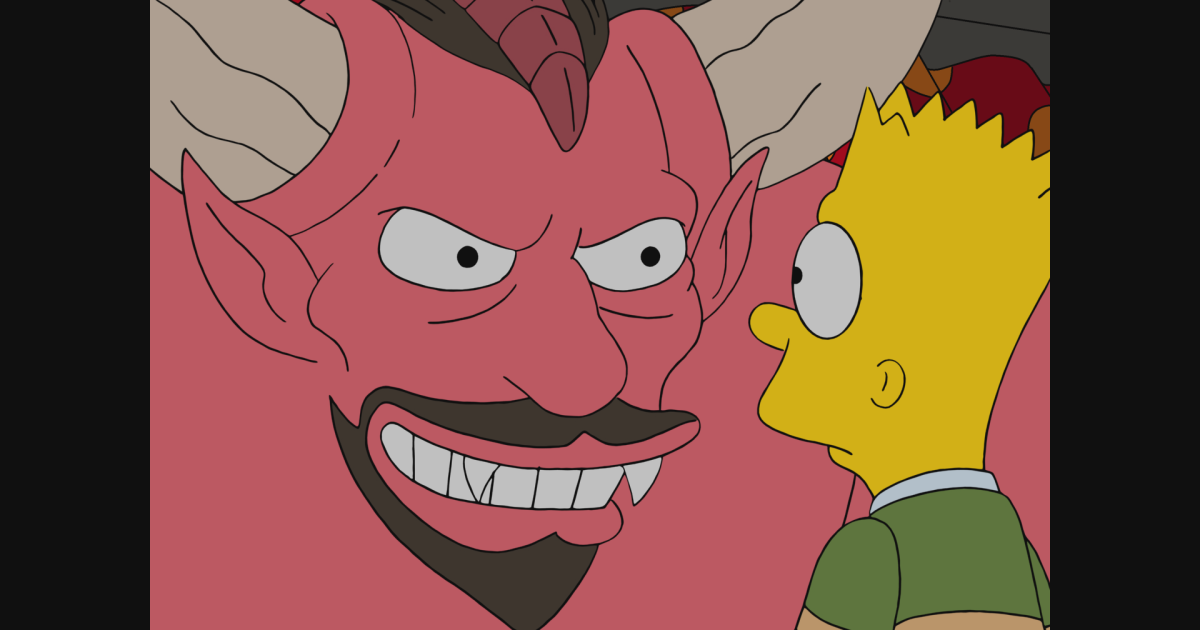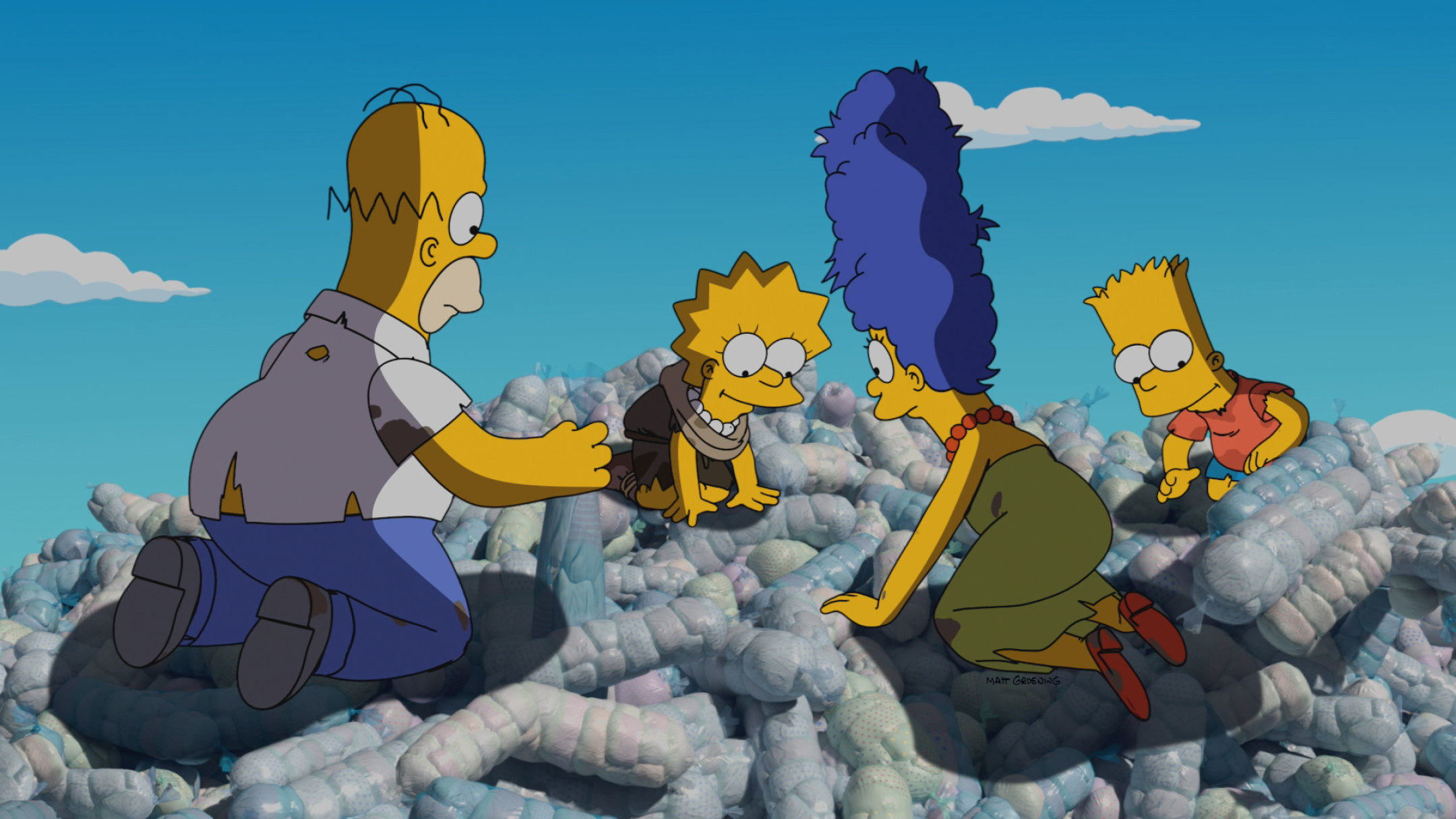
Matt Groening knows what a real theremin sounds like.
Growing up with classic science fiction movies and music from the 1950s and 60s, the creator of “The Simpsons” often heard a unique, haunting sound from an early electronic instrument in film scores and albums by his idol, Frank Zappa. A similar instrument, the ondes martenot, appeared in one of his favorite classical compositions—Olivier Messiaen’s “Turangalîla-symphonie”—which later inspired the name of a main character in “Futurama,” Turanga Leela.
When composer Alf Clausen joined the second season of Matt Groening’s hit show about a yellow family, he was asked to include the theremin – an unusual instrument with two metal antennas played without physical contact – in the first “Treehouse of Horror” episode in October 1990. Groening instantly knew it wasn’t a real theremin because the sound was fluctuating in an impossible way.
Groening remembers Clausen eventually admitting that the strange sound wasn’t made by a theremin, but a keyboard. It took years before they actually got a real theremin. While theremins can’t play every note, Groening says they have a unique and wonderful feel to them.
As a lifelong Simpsons fan, I always knew the music was special, and that was largely down to Alf Clausen. He started with that very first ‘Treehouse of Horror’ episode – which, of course, became a yearly Halloween treat – and scored every single episode right up through season 28, ending in 2017. Beyond the score, he collaborated with the writers on so many hilariously memorable songs. Matt Groening himself called Alf the show’s ‘secret weapon,’ and honestly, that feels spot on. He was a huge part of what made The Simpsons so consistently funny and heartwarming.

According to creator Matt Groening, the show’s producers constantly looked for ways to cut costs, initially wanting to use synthesizers and a drum machine for the music – a common practice for television in the 1990s. However, Groening believed strong music was essential, feeling the animation itself was somewhat basic. He explains, with a laugh, that he wanted the show to feel intentional and high-quality, and thought a full orchestral score would convey that. He recalls that the show *Alf* understood this concept perfectly.
Matt Groening was upset when Alf Clausen was let go by Fox in 2017. While Fox said it was due to the expense of using a live orchestra for each episode, the experienced composer—who had also created music for shows like “Moonlighting” and “ALF”—was 76 years old at the time and later filed a lawsuit against Disney and Fox alleging age discrimination. Clausen passed away earlier this year at the age of 84.
Bleeding Fingers Music is a group of composers created in 2014 by Hans Zimmer, Russell Emanuel, and Steven Kofsky. It started with just six composers but has expanded to include 26. Hans Zimmer had previously worked with “Simpsons” producer James L. Brooks, and he convinced a hesitant Matt Groening with his playful music for “The Simpsons Movie” in 2007.
When the original composer left, Brooks asked Hans Zimmer to score the series. Zimmer suggested Bleeding Fingers, a team already known for their work on shows like “Planet Earth” and documentaries for the History Channel.

Emanuel, a playful Brit who began his career creating tribute rock albums in the 1980s, explains that the decision-making process was lengthy. He co-founded Extreme Music in 1997, a company that created electronic dance music for television shows, including “Top Gear.” Hans Zimmer quickly became involved, and in 2001, Extreme Music relocated to Zimmer’s large Remote Control Productions facility in Santa Monica.
I remember Hans calling me in for a serious talk. He just said, “We’ve got *The Simpsons*. Don’t mess this up!” It was clear how much weight they were putting on getting it right, and honestly, it was a little intimidating!
The start of ‘The Simpsons’ was a bit strange – a rushed project for creator Matt Groening and a challenging introduction for the new team of composers led by Alf Clausen. They only had three weeks to create the first episode, a parody of ‘Game of Thrones’ called ‘The Serfsons,’ which included theremin music. Groening jokingly asked if the theremin was played live, but the composers admitted it wasn’t.
“He noticed it right away and pointed out our mistake,” Emanuel explains. “We had to revise everything because of it. He had a couple of major concerns, but honestly, it was all part of the learning process for us.”
Last Friday morning, in a recording studio near Matt Groening’s office – where he’s worked for almost 40 years – the creator of “The Simpsons” was happy to watch a live orchestra record the music for the upcoming “Treehouse of Horror” episode (available on Hulu the next day). A talented woodwind player, Pedro Eustache, was creating unique and lovely sounds with his many flutes from a separate booth, and a real theremin was being played right on the stage.
Kara Talve, a talented young composer for Bleeding Fingers and the main composer for “The Simpsons” since Season 30, led the session. This was her sixth “Treehouse of Horror” episode. After studying at Berklee College of Music, she initially joined Bleeding Fingers as an assistant, driven by her desire to work on “The Simpsons.”

Talve explains that she needed to prove herself to Russell, her boss. She admits he hadn’t fully trusted her yet, which she understands considering she was only five years old at the time.
They’re both clearly self-deprecating and playful – one of them recently got a tattoo of a Spotify code that plays Justin Timberlake’s “SexyBack” when scanned – but they’re also deeply committed to their work.
Let me tell you, working on a show like ‘The Simpsons’ is a huge deal, and we definitely don’t take that lightly. I was really fascinated by the show’s history, and I’m a big fan of Russell, so I went back and re-listened to a ton of older episodes. I really wanted to capture that same musical feel that Alf Clausen and Danny Elfman – who did that amazing theme song, which we honestly consider the heart of the show – created. It’s about honoring what they did and building on that legacy.
She explains that Springfield has a very unique color scheme. It’s almost like its own visual language – a specific combination of colors you won’t find anywhere else.
A great “Simpsons” score relies on a few key things. Often, the music should fade slightly to let a joke – whether spoken or visual – really land. Because the show is packed with references to popular culture and parodies, the composers need a huge understanding of music from all eras. Luckily, with so many composers working together, they have a vast resource to draw from.
According to Talve, working on the show requires a lot of flexibility because it covers so many different musical genres. She explains that she learned to handle this variety thanks to Russ, whom she considers a master of production music. She also relies on the diverse instrumental skills of the composers in their group, often asking them to record specific parts to ensure the music sounds authentic and will appeal to the show’s creators.
A typical episode of ‘The Simpsons’ includes five to ten minutes of musical score, which may seem like a manageable amount.
Creating the music for each scene is surprisingly difficult,” Talve explains. “People might think that because the cues are short – sometimes just a few seconds – it’s easy. But it’s actually much harder for me to create thirty brief musical moments for a single episode than to work on one five-minute piece. The music needs to capture a lot of emotional shifts, and fitting all of that into such short timeframes – often just ten seconds – is a real challenge.”
(In 2014, Clausen told me he always joked that “I can make you feel five ways in 13 seconds.”)

While most episodes of the show are recorded with smaller musical groups at the Bleeding Fingers studio, the annual “Treehouse of Horror” episodes are different. They feature a lot more music, and the producers treat them with a larger budget, bringing in a full orchestra for a recording session at Fox, similar to how things were done in the past.
This year’s horror collection playfully imitates films like “Jaws,” “Late Night With the Devil,” and “Furiosa.” The music, composed by Talve, matches the shifting tones of each spoof, ranging from dramatic orchestral horror to unsettling electronic sounds, global percussion, and even a unique flute made of plastic.
Matt Groening greatly admired Talve’s work on “Treehouse” and has come to appreciate the way the Bleeding Fingers team operates. He now sees their process less as mass production and more like a collaborative effort similar to traditional animation.
According to Groening, animation is almost always a team effort. “The Simpsons,” for example, relies on the contributions of many writers, voice actors, animators, and musicians. He especially highlighted a recent session, noting that it featured some of the most talented musicians in Los Angeles performing fantastic music.
He even wishes people could witness it in person.
He believes this music deserves to be performed live because it’s genuinely enjoyable. While he feels it can be somewhat limited when paired with silly cartoons, he insists the music itself is truly excellent.
Read More
- Clash Royale Best Boss Bandit Champion decks
- Clash Royale December 2025: Events, Challenges, Tournaments, and Rewards
- Clash Royale Witch Evolution best decks guide
- Clash Royale Furnace Evolution best decks guide
- Mobile Legends X SpongeBob Collab Skins: All MLBB skins, prices and availability
- Mobile Legends December 2025 Leaks: Upcoming new skins, heroes, events and more
- Mobile Legends November 2025 Leaks: Upcoming new heroes, skins, events and more
- BLEACH: Soul Resonance: The Complete Combat System Guide and Tips
- The Most Underrated ’90s Game Has the Best Gameplay in Video Game History
- Doctor Who’s First Companion Sets Record Now Unbreakable With 60+ Year Return
2025-10-19 13:32